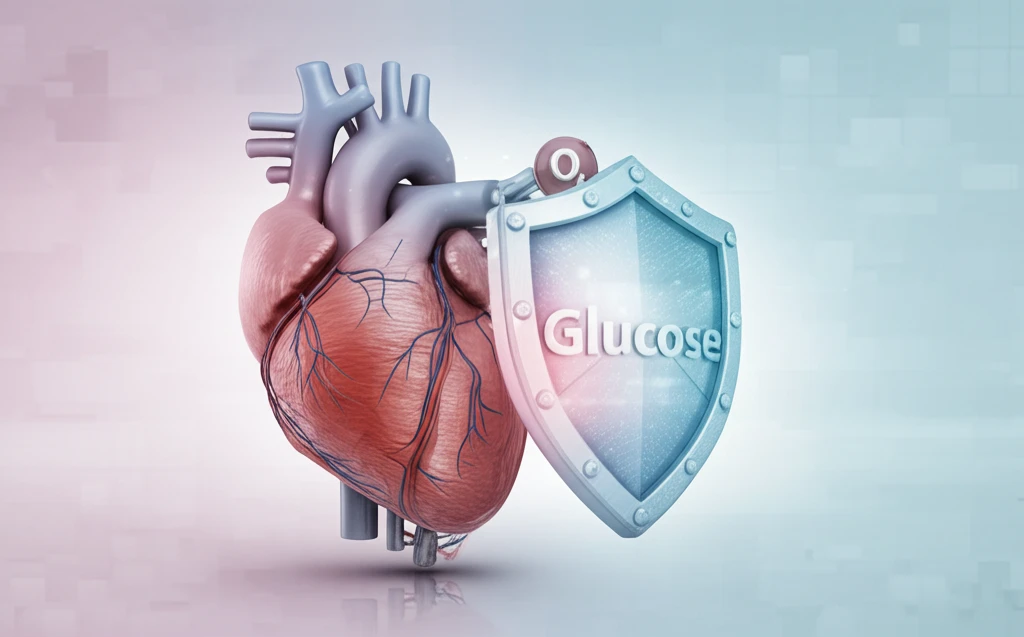
SGLT2 Inhibitors: A Sweet Solution for Heart Health in Diabetics?
"Explore how empagliflozin, an SGLT2 inhibitor, could reduce mortality after heart attacks in diabetic individuals by altering cardiac metabolism and antioxidant activity."
For individuals with diabetes mellitus (DM), cardiovascular events, particularly heart failure (HF), represent a significant threat beyond atherosclerosis. The risk of developing heart failure is more than doubled in diabetic patients, leading to poorer outcomes regardless of existing coronary artery disease. While intensive glucose control has been a traditional approach, studies suggest it doesn't necessarily prevent cardiac events and might even increase HF hospitalization rates.
Recent clinical trials have sparked optimism, highlighting the potential of sodium-glucose cotransporter 2 (SGLT2) inhibitors to significantly reduce cardiovascular incidents, including HF-related hospitalizations, in DM patients. However, precisely how these SGLT2 inhibitors work to prevent HF and reduce mortality remains an area of active investigation.
Treatment with SGLT2 inhibitors does more than just lower plasma glucose levels. It initiates a series of hemodynamic, neurohumoral, and metabolic shifts that can profoundly impact cardiac health. One intriguing theory suggests that SGLT2 inhibitors promote cardioprotection by influencing myocardial fuel use, increasing levels of β-hydroxybutyrate (βOHB), a ketone body. As the heart's energy sources shift based on workload and availability, understanding how SGLT2 inhibitors affect these dynamics is crucial.
Decoding Empagliflozin's Cardioprotective Action: How Does It Work?

A new study published in the Journal of Pharmacology and Experimental Therapeutics sheds light on the mechanisms by which empagliflozin, an SGLT2 inhibitor, reduces mortality following acute myocardial infarction (MI) in a type 2 diabetes model. Researchers explored how empagliflozin modifies cardiac metabolomes and enhances antioxidant activity in diabetic rats, offering crucial insights into its cardioprotective capabilities.
- Improved Survival Rates: Empagliflozin significantly enhanced the survival rate of OLETF rats post-MI, increasing it from 40% to 70%.
- Metabolic Shift: Treatment reduced blood glucose and increased β-hydroxybutyrate (βOHB) levels in OLETF rats. Metabolomic analysis revealed that empagliflozin modified cardiac metabolism patterns, promoting both increased glucose oxidation and ketone utilization.
- ATP Preservation: Empagliflozin prevented the post-MI reduction of ATP levels in the non-infarcted myocardium.
- Antioxidant Boost: The treatment significantly increased myocardial levels of Sirt3 and SOD2, both crucial antioxidant proteins.
- Exogenous Ketone Benefits: Administering βOHB alone partially mimicked the beneficial effects of empagliflozin.
The Future of Cardioprotection: What's Next for SGLT2 Inhibitors?
The study's findings open new avenues for understanding and treating heart complications in diabetic patients. By highlighting the metabolic and antioxidant mechanisms of empagliflozin, researchers provide a foundation for further exploration and clinical applications. While more studies are needed to fully understand the long-term effects and optimal use of SGLT2 inhibitors, the current research offers hope for improving cardiac outcomes in a population at high risk.
